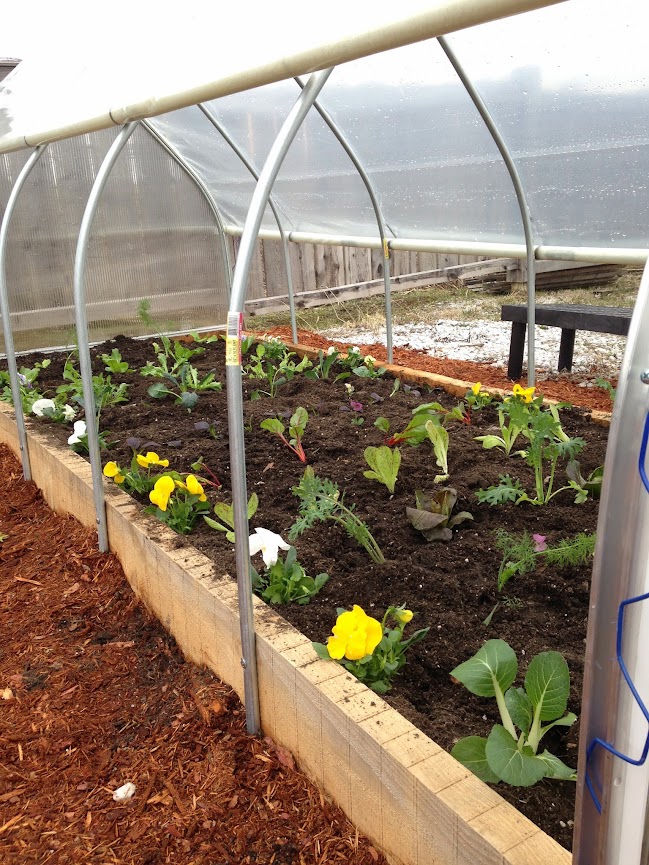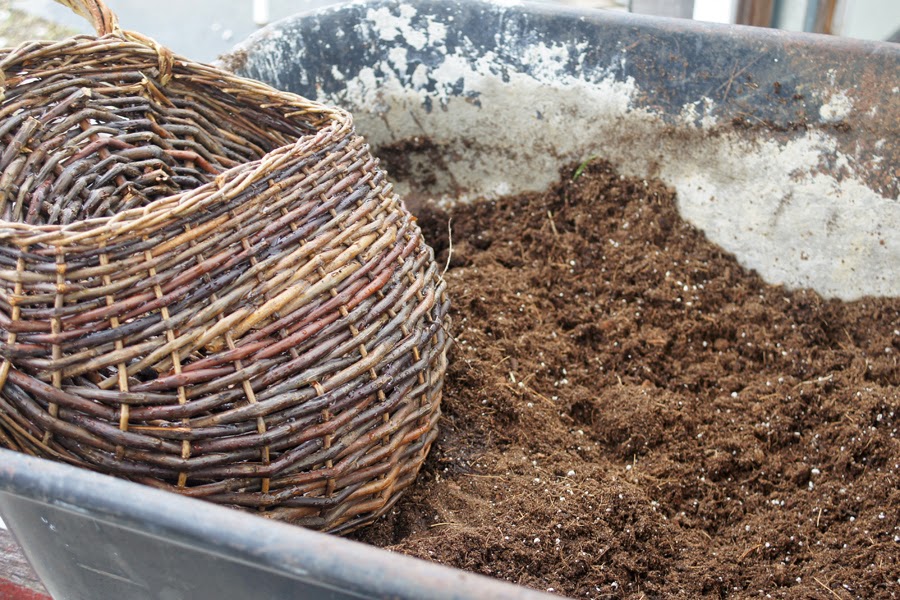An early Spring planter with lamium, viola, stock and alyssum.
SPRING
OUR FAVORITE FROST HARDY ANNUAL FLOWERS
Pansies and violas: The obvious first choice for springtime color, they withstand a frost or a snowstorm with ease. With their wide range of colors, patterns and sizes, they match any color palette - and they smell so good! Edible flowers.
Nemesia: Snapdragon-like flowers float above deep green foliage. You’ll need to lean in, but it’s worth sniffing these blooms: Their scent is amazing.
Alyssum: Lovely low growing plant with fluffy white or purple flowers who’s smell is sweet as honey.
Lobelia: Shades of true blue make this plant special. They are a great ground cover or filler for springtime planters.
Lobularia: Their intoxicating scent will win your heart instantly. They mix well with pansies or shine on their own, spilling over the edges of a hanging basket.
Stock: This cold loving cut flower blooms for weeks while exuding a wonderful perfume.
Osteospermum: Not quite as cold hardy as the other plants, but still well able to tolerate temperatures in the 30ies. Cute daisy like flowers in many shades of the rainbow.
Argyranthemum: Similar cold hardiness as Osteos. Fine foliage with multi-stemmed daisy like flowers in pinks, yellows and white. If kept deadheaded, they will bloom all the way through fall.
Cold Hardy Herbs and Vegetables that we love to mix in for texture, color and flavor:
Chervil
Curly and Flat Parsley
Cilantro
Dill
Sorrel
Mustard Greens like Tokyo Bekana and Ruby Streaks
A sun loving summer basket filled with purple petunias, lobelia, and verbena.
EARLY SUMMER
A SEASON FOR ALL COLORS
Once all chance of frost has passed, the palette of flowers widens: Geraniums, Begonias, Zinnias, Bidens, Petunias, Verbena, Lantana, Angelonia, Marigolds, Ageratum and so many more are now safe to grow outside.
Especially beloved by bees and hummingbirds are Agastache, Salvias, and Cuphea.
Options for foliage plants to create a green (or multicolored) backdrop range from trailing Plectranthus, Dichondra, and Sweet Potato Vine, to bushy Eucalyptus, Coleus, and Iresine, all the way to spiky upright Cordyline, and ornamental grasses.
Great choices for planters in part shade: Begonias, Coleus, Browallia, Impatiens, and Torenia.
MID SUMMER
TIME FOR A REDO
By July most planters that were created earlier in the year are starting to fade and can benefit from a makeover. Cool weather plants just don’t enjoy the heat, but you don’t need to pull them out. You can keep them tucked away in a shady spot, idly awaiting their time to shine again later in Fall. Oftentimes pansies, violas, stock and other cool weather flowers will stay alive through the heat of summer if they are kept in the shade of other plants and they will send out new flowers once the weather cools later in the season.
Make sure to fertilize your planters with a handful of compost or a dose of liquid fertilizer at least every two weeks. Gently trim back plants that look overgrown by cutting a few branches by a third or to half their length. Remove dead leaves and flowerheads to prevent diseases from spreading.
Excellent choices for their heat tolerance: Chrysocephalum, Gazania, Portulaca, and any silver leaved foliage plants.
LATE SUMMER INTO FALL
A SECOND CHANCE FOR COOL LOVING PLANTS
Cannas, ornamental grasses, Rudbeckia hirta, begonias, fuchsia and foliage plants are a great way to create a colorful look that will transition from high summer into early fall. We love to use perennials in our summer pots too. Heuchera, hosta, and anemone are all fun plants for adding color and texture and they transition well into the garden after serving dutifully in your planters.
Fall color provided by rudbeckia.
You can find our full annual flower plant list here.
This blog post was written by Julie Rubaud and Kat Consler.


























